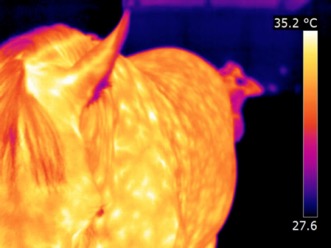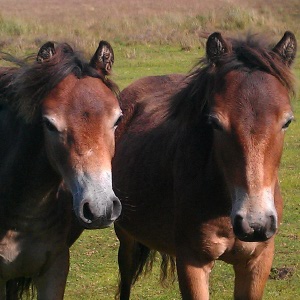How To Use Thermography To Help Equine And Pet Health

Courtesy: Elaine Hall, Equine Thermographer
What is Thermography?
It works on the principle that the higher a temperature of an object, the greater the amount of infrared radiation (which we perceive as heat) is emitted. Infrared or thermal energy, is invisible to the human eye, and so a thermal camera is used, which registers infrared radiation (ie heat).
The colours used in a thermal image, are a "palette", which have specific colours that vary according to the temperature. Usually, the coldest colour areas are in blue, and the hottest areas are in white, with reds/yellows being "middle temperatures".
How Can Thermography Help My Horse or Other Animal?
It can be used for a variety of reasons, although one of the main reasons is to identify pain. This could be pain from:
- Infection
- Poorly fitting tack or harness (e.g. saddle or bridle, etc)
- Ligament or tendon injuries
- Joint problems
- Feet problems
Benefits of Using Veterinary Thermography?
Thermal camera's are usually small, and so portable - usually the technique can take place at the horse's yard. Also, it doesn't cause any harm to the animal (or handler), and the animal can also be fully awake.
It's important though, as with any diagnostic technique or therapy, to consider the whole. So take into account other signs of health or factors. Research in 2021 has shown that thermography may not be as accurate as first thought in diagnosing saddle issues. But of course, you'd need to also consider how the horse is when exercised as well as identifying any muscle tension, etc too. Read the research "A Systematic Approach to Comparing Thermal Activity of the Thoracic Region and Saddle Pressure Distribution beneath the Saddle in a Group of Non-Lame Sports Horses" here.
When Should it NOT be used?
If the horse is wet, (e.g. from rain or very sweaty), then the moisture on the coat may affect the images. Also, it's best not to try and use thermography in windy or near heat sources, as again it can affect the quality of the images and therefore the effectiveness of the technique.
How Many Types Of Animals Can Thermography Help?
Yes, thermography is becoming more widely used in many areas of veterinary science - including with dogs and cats as well as horses, amongst other species! .
Where Can You Find a Veterinary Thermographer?
Many veterinary surgeons now use thermography within their practice. Additionally, some qualified therapists who work with horses and other animals are trained in using thermography.
Is there research evidencing effectiveness of Veterinary Thermography?
Yes there is an increasing amount of research into the use of thermography in veterinary practice. Find some useful links at my Holistic Animal Care Research page
Have you considered training as a veterinary thermographer? - Check out my training advice page here.
Would you like information on Veterinary Thermographers for your horse or dog? Please email us at info@taranet.co.uk - we'll be pleased to try and assist!
Next. If you know someone who'd find this article of interest for their animal, please share it with them. Thanks!
About The Author
This article has been extensively researched and written by Suzanne Harris. Who is also the designer and developer of this site. A lifelong animal lover with a passion for ensuring animals can access complementary therapies for their health and wellbeing.
